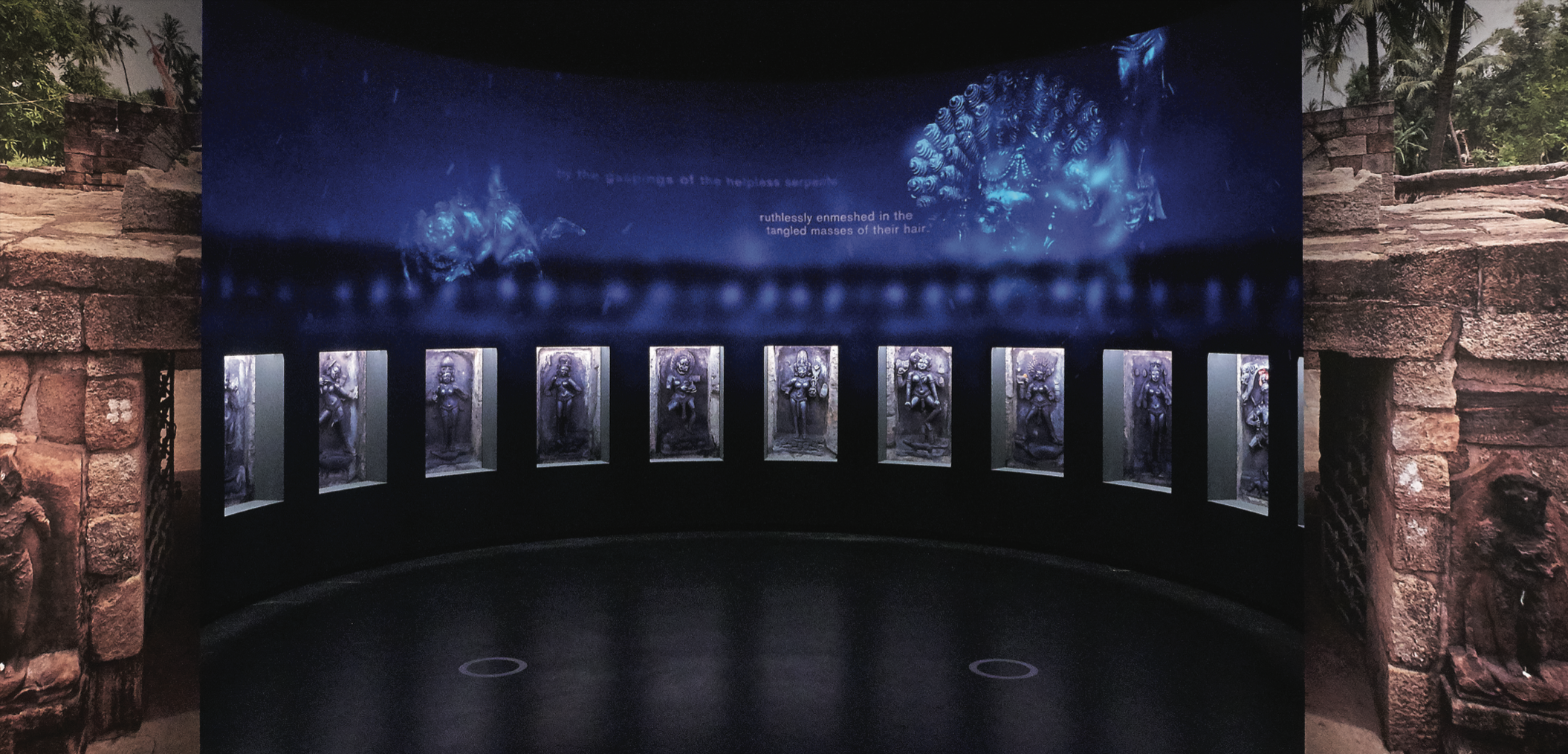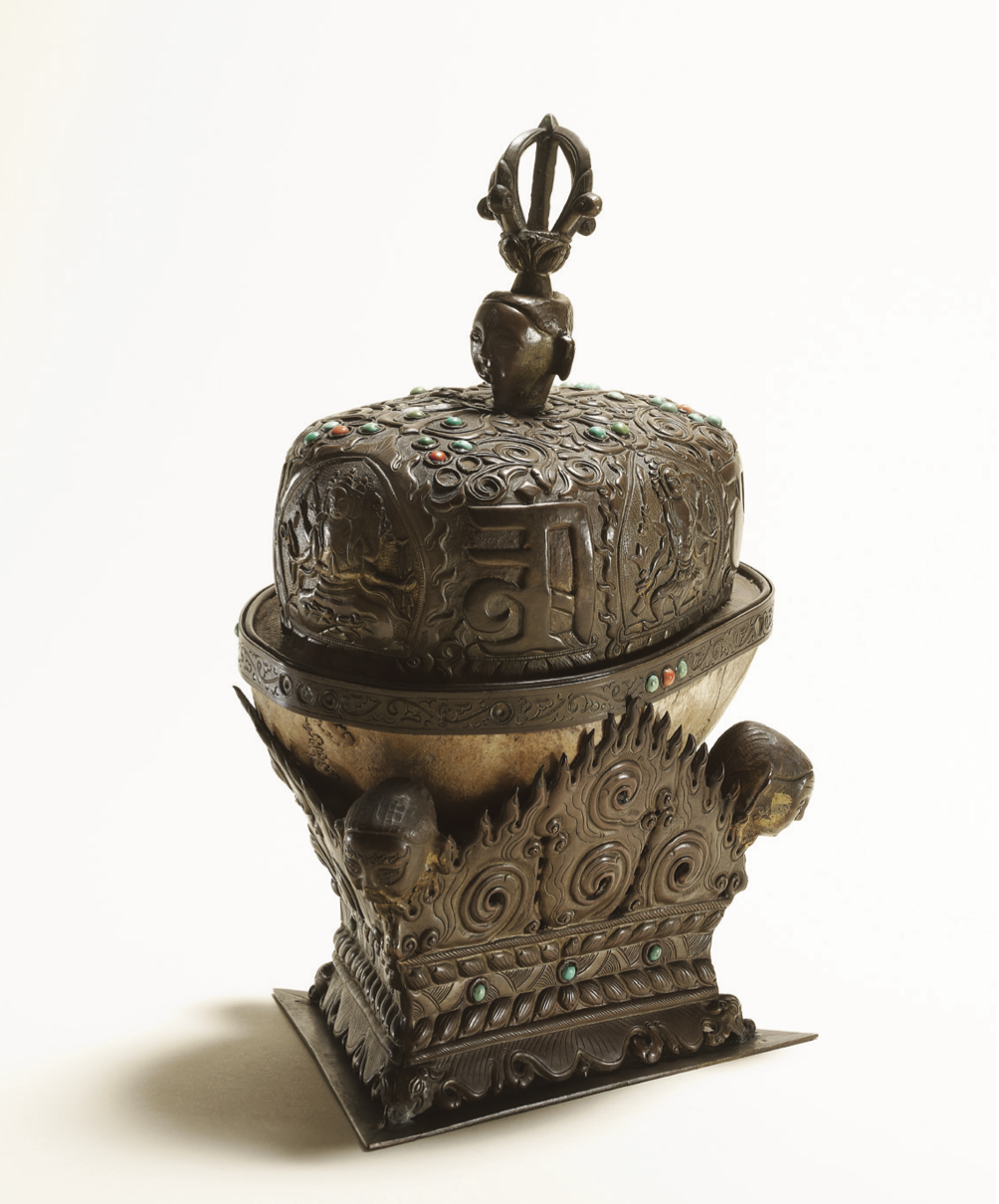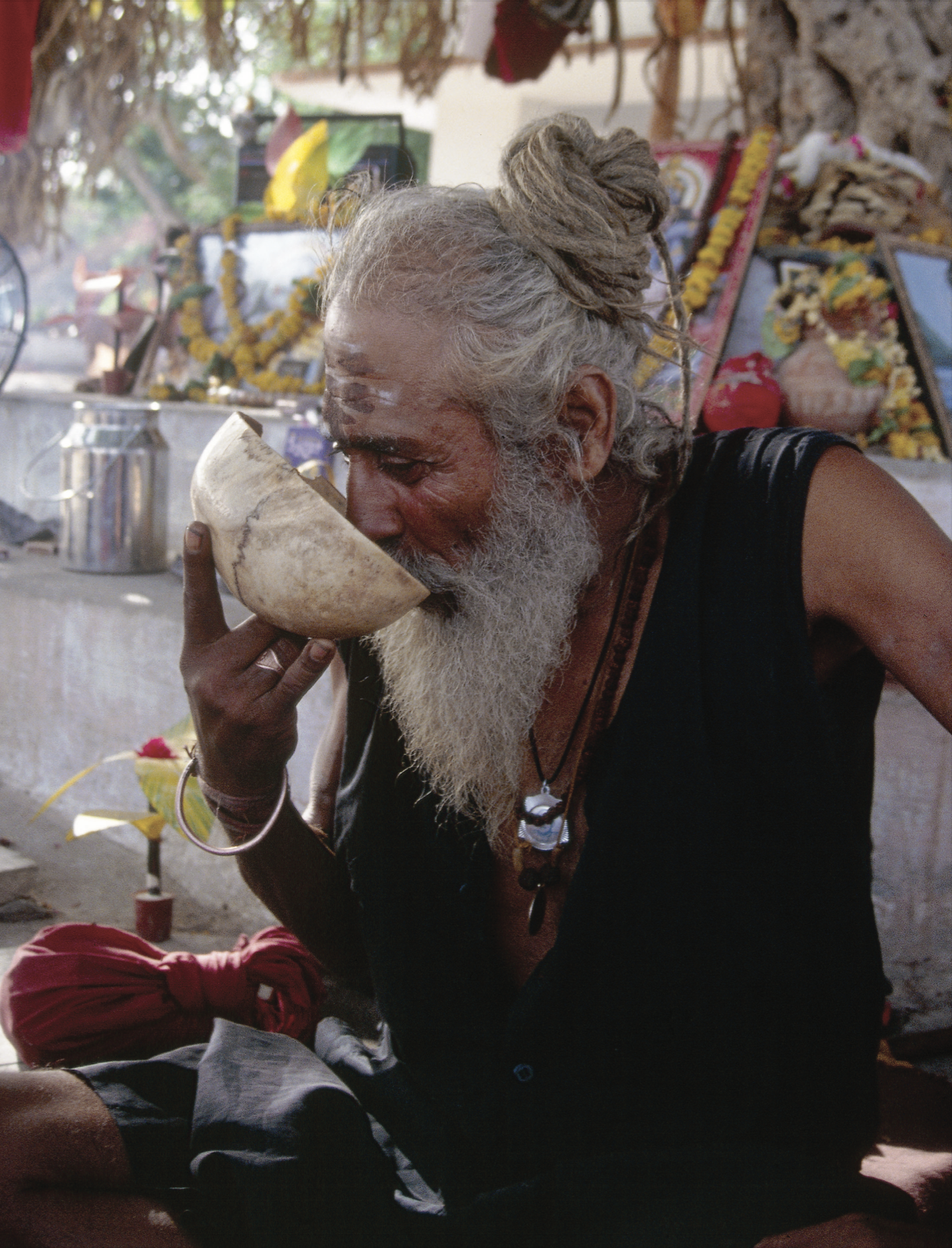Tantra: A Visual History
By Imma Ramos
The British Museum’s exhibition, Tantra: enlightenment to revolution (September 2020 – January 2021) explored how a radical South Asian philosophy has shaped lives and captures imaginations for more than a millennium. Here its curator, Imma Ramos, offers her insights into what she learnt from working on the show and its accompanying book.
Yogini. Kanchi, Tamil Nadu, India. 10th century. Granite, 108 × 63.4 × 34.2 cm. British Museum 1955,1018.2. Donated by P.T. Brooke Sewell Esq. ©The Trustees of the British Museum
Tantra is an Indian philosophy which affirms all aspects of the material world as sacred and infused with divine feminine power. It teaches that enlightenment can be achieved rapidly by actively engaging with spiritual obstacles, such as desire, aversion and fear, in order to ultimately transcend them. Tantric imagery is therefore unique in its inclusion of erotic and macabre symbolism. The central aim of the show, and the accompanying book, was to present the first historical exploration of Tantric visual culture from its origins in India to its reimagining in the West. The exhibition was divided into four sections, which explored Tantra’s link to successive waves of revolutionary thought, from its early medieval transformation of Hinduism and Buddhism, to the Indian fight for independence and the rise of 1960s counterculture in the West.
Tantra is rooted in sacred instructional texts, composed from around the 6th century onwards, called the Tantras, which are often written in the form of a conversation between a god and goddess. The first section of the show explored the rise of Tantra in medieval India. Power is central to Tantra and that power is described as feminine. The Tantras were unique in their praise of women and the encouragement of their worship as goddesses, while women themselves could play powerful roles as independent practitioners. Tantra inspired the dramatic rise of goddess worship in medieval India, the legacy of which can still be felt strongly today.
Evocation of the 10th century Yogini temple in Hirapur (India), from day to night. Voices of devotees are included, based on early texts. ©The Trustees of the British Museum
In this first section of the exhibition we evoked an imaginative recreation of one of the most famous Tantric temples in India, which is dedicated to Yogini goddesses and was built around the 10th century in Odisha (eastern India). We wanted to transport visitors to a time when devotion to these goddesses was at its height. Most Yogini temples were circular and unique in their roofless design, perhaps in order to attract the Yoginis from the sky into the sacred courtyard. Some of the Yoginis from the Odisha temple stand and dance upon animals that they can shapeshift into. Others balance upon corpses and dismembered heads, and some drink from skull-cups. For the imaginative evocation of the temple we took inspiration from medieval Sanskrit texts which describe the kinds of Tantric rituals that may have been carried out within these spaces – including the consumption and offering of wine, blood and flesh which were believed to energise the Yoginis. In our evaluation findings this immersive part of the show was a stand-out feature for visitors, they felt it gave a sense of time and place. Through the experience of working on the temple evocation I learnt to appreciate the power of incorporating immersive digital experiences with scholarship at their heart. New technologies must be mastered and used by museums to bring research and interpretation to wider audiences and encourage greater engagement.
Chakrasamvara in union with Vajrayogini (detail). Tibet. 18th century. Painted silk, 129.5 × 77.6 cm (image); 230.5 × 128 cm (entire scroll). British Museum 1957,0413,0.1. ©The Trustees of the British Museum
The second section of the exhibition explored the spread of Tantra across Asia via pilgrimage networks, with a particular focus on Tibet. One of the themes explored here was the role of sex and divine union, in order to confront some of the more prevalent stereotypes. In Tantric texts, gendered symbolism is often used to articulate the two qualities to be cultivated on the path towards enlightenment, wisdom and compassion. These are visualised as a goddess (representing wisdom) and a god (representing compassion) in sexual union. The goal is to internalise their qualities by visualising the deities uniting within the body through meditation. This part of the exhibition also explored the role of human remains in Tantric Buddhist practice which was developed in consultation with members of the Tibetan community as well as practitioners and scholars of Tibetan Buddhism.
Kapala with brass stand and lid. Tibet. 19th century. Human bone with brass, 28.2 × 18 × 20 cm (including base, kapala, and lid). British Museum 1931,1124.1.a–c. ©The Trustees of the British Museum
The objects we talked about during the workshops were originally used in a ritual context, and as a collective our aim was to demystify their role in Tibetan cultural practice. The use of human remains is a reminder of the impermanence of the body. The workshops shone a light on different cultural attitudes to death. Ultimately, in the exhibition we included participants’ voices and perspectives via audio stops and evaluation from the exhibition shows how important that was for visitors. The value of sharing interpretive power and engaging in dialogue with both academic and non-academic colleagues beyond the museum walls is clear in order to promote innovative approaches to interpreting the collection.
Kali. Krishnanagar, Bengal, India. Late 19th century. Painted and gilded clay. 53 × 29 × 43 cm. British Museum 1894,0216.10. ©The Trustees of the British Museum
The third section of the exhibition looked at how Tantra was harnessed for its insurgent potential during the fight for Indian independence in the late 19th century. Indian revolutionaries in Bengal reimagined Tantric goddesses such as Kali as symbols of an independent India rising up against the British. Revolutionaries effectively exploited British fears and misconceptions of the goddess as a bloodthirsty ‘demon mother’. In the exhibition the true meaning behind her symbolism was decoded. This was an interpretive strand that ran throughout the exhibition, in each section we highlighted an object that demanded extra unpacking and we decoded its symbolism using specially designed graphics.
‘Tantra and revolution in colonial India’ section of the Tantra: enlightenment to revolution exhibition (British Museum). ©The Trustees of the British Museum
This was one of the most popular sections of the exhibition amongst visitors according to our audience evaluation and showed a public appetite for engaging in colonial critique. For example, one visitor commented – “I appreciated the framing and honesty around Britain’s role in suppressing and demonising Tantra; owning and acknowledging British history.” For me, this was about the need to emphasise alternative perspectives on empire by foregrounding the voices and agency of those under colonial rule. As curators we need to develop new ways of interpreting objects that foreground multi-vocal experiences and challenge preconceptions of the past. But this was also about engaging with our institutional past via more transparent approaches to collecting histories – another visitor pointed out that “the exhibition actively acknowledged the colonial past linked to the acquisition of the objects. I liked that this put them into context.” The provenance of objects in the exhibition was explored in more detail in a dedicated page on the Museum’s website. Beyond the exhibition, I look forward to exploring colonial-era material in the collection, with the aim of decentering Eurocentric narratives, which will also involve a need for institutional self-reflexivity.
Dashrath Ram, photograph by Dolf Hartsuiker. Ujjain, Madhya Pradesh, India. 1992. 35 mm slide. British Museum 2014,3004 .1416. From the Hartsuiker Archive, donated by Mr Dolf Hartsuiker. ©The Trustees of the British Museum
In the final part of the exhibition we explored how Tantra has been reimagined from the 20th century until today. Artists in Asia and the West have been inspired by Tantra, interpreting it as a radical movement capable of challenging repressive attitudes towards gender, sex and politics. Today, Tantra is as alive as ever. Sects in India, including the Aghoris, reveal its enduring power. The practices of the Aghoris include drinking from skull-cups and smearing their bodies with the ash of burnt corpses from funerary pyres, which is traditionally deemed polluting. For the Aghoris, transgressive practices are an expression of the Tantric assertion that all is sacred and there is no distinction between what is conventionally perceived as pure and impure, just as there is no distinction between the self and the divine. We hope visitors to the exhibition will have had the opportunity to not only experience an overview of the history of Tantra from its origins to the present day but also acquire an understanding of Tantra as a philosophy that inspired masterpieces of visual culture. Above all, we hope visitors will have been stimulated and challenged to question their own ideas about the nature of the divine.
Purchase the Single Issue Now in Print or Digital









![On Tantra [Print]](https://images.squarespace-cdn.com/content/v1/6269d46844c82f0cce6dbac2/1679240100578-XUU2ZL6DL7YDGMDYHWK7/Tarka_07_Tantra_wide.jpg)